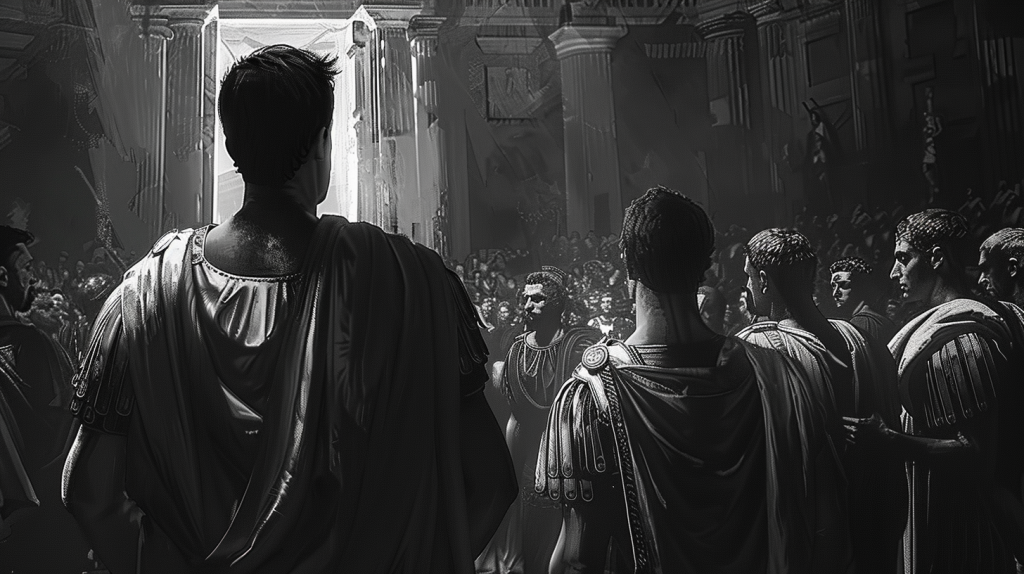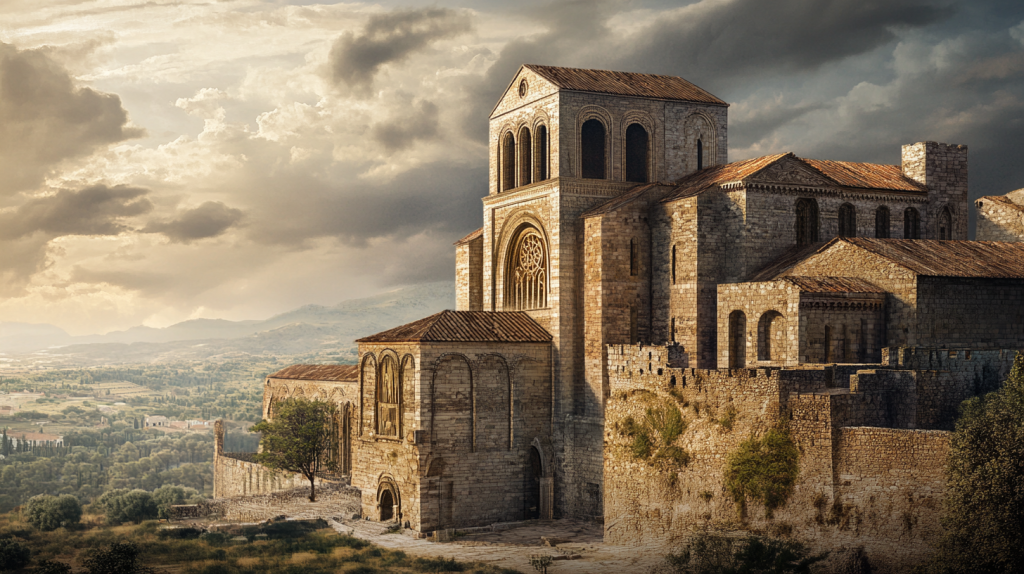The echoes of ancient Rome still ripple through our world today, influencing everything from our laws to the words we speak. This remarkable civilisation, which flourished over two millennia ago, laid the groundwork for many aspects of modern life that we often take for granted. From the roads we travel on to the way we govern ourselves, Rome’s legacy is all around us. Let’s explore 24 fascinating ways in which the Roman Empire continues to shape our society, offering a glimpse into how the past and present intertwine in unexpected and remarkable ways.
The Calendar We Use

The calendar we rely on today has its roots in ancient Rome. Julius Caesar introduced the Julian calendar in 45 BCE, which forms the basis of our modern Gregorian calendar. This system of months and days, with a leap year every four years, has kept us on track for centuries. The names of our months, such as July and August, are direct references to Roman emperors, further cementing the Roman influence on our timekeeping.
Our Legal System

Many principles of modern law can be traced back to Roman legal codes. The concept of “innocent until proven guilty” and the idea of a structured legal system with judges and juries have their origins in Roman law. These foundations continue to shape how justice is served in many countries today. The Roman principle of “equality before the law” remains a cornerstone of modern legal systems, emphasising fairness and impartiality.
The Latin Alphabet

The alphabet you’re reading right now is a direct descendant of the Latin alphabet used by the Romans. This writing system spread across Europe with the Roman Empire and eventually became the most widely used alphabet in the world, forming the basis for many modern languages. The Roman capital letters we use today are nearly identical to those carved on ancient monuments, showcasing the enduring nature of this writing system.
Architectural Marvels

Roman architecture has left an indelible mark on our built environment. The use of arches, domes, and concrete in construction all stem from Roman innovation. Many modern government buildings and monuments draw inspiration from classical Roman designs, showcasing the enduring appeal of this ancient style. The Pantheon in Rome, with its remarkable dome, continues to inspire architects and engineers with its ingenious design and longevity.
Plumbing and Sanitation

The Romans were pioneers in plumbing and sanitation. They built complex systems of aqueducts, sewers, and public baths that laid the groundwork for modern urban infrastructure. The concept of bringing fresh water into cities and removing waste efficiently is a Roman legacy we still benefit from today. Roman lead pipes, although not in use today due to the risk of lead poisoning, still exist in many parts of the world. And they were so well-made that some are still sound enough that they could, in theory, still be used.
Roads and Transportation

The phrase “all roads lead to Rome” reflects the vast network of roads the Romans built across their empire. These roads, many of which still exist, were crucial for trade, communication, and military movement. The Roman approach to road building influenced modern highway systems and urban planning. The Romans’ use of milestones to mark distances along their roads is mirrored in our modern use of kilometre markers on highways.
The Idea of Citizenship

The concept of citizenship as we know it today has its roots in ancient Rome. Roman citizenship came with rights and responsibilities, influencing modern ideas about the relationship between individuals and the state. This notion of civic identity continues to shape how we view our place in society. The Roman practice of granting citizenship to people from conquered territories was a revolutionary idea that foreshadowed modern concepts of inclusive nationhood.
Democracy and Representation

While Rome wasn’t a democracy in the modern sense, its system of government included elements of representation that influenced later democratic systems. The Roman Senate and the concept of elected officials have echoes in many modern governments around the world. The Roman principle of checks and balances, designed to prevent any one person or group from gaining too much power, is a key feature of many contemporary democratic systems.
Latin in Language

Even if you’ve never studied Latin, you use words derived from it every day. English, along with many other languages, borrows heavily from Latin. From “et cetera” to “per capita,” Latin phrases are peppered throughout our daily communication. Latin roots form the basis for much of our scientific and medical terminology, providing a common language for researchers and practitioners worldwide.
The Julian Calendar

Before Julius Caesar’s calendar reforms, the Roman calendar was a mess. Caesar’s changes, including the addition of a leap year every four years, brought much-needed order to timekeeping. This Julian calendar formed the basis for the Gregorian calendar we use today. Caesar’s reform was so effective that it remained in use for over 1,600 years until Pope Gregory XIII’s minor adjustments in 1582.
Concrete as a Building Material

The Romans didn’t invent concrete, but they perfected its use in construction. Roman concrete was incredibly durable, allowing them to build structures that have stood for millennia. This innovation paved the way for modern concrete, a crucial material in today’s construction industry. The Roman recipe for concrete, which included volcanic ash, was so effective that it could even set underwater, enabling the construction of harbours and breakwaters.
Newspapers and Mass Communication

While the Romans didn’t have newspapers as we know them, they did have a system of public announcements called “Acta Diurna.” These daily gazette postings in public spaces can be seen as early precursors to modern news media and mass communication. The Acta Diurna included a wide range of information, from government decrees to noteworthy events, serving as a vital source of public information in ancient Rome.
Arches in Architecture

The Roman arch is a fundamental element in architecture that’s still widely used today. This innovation allowed for the construction of larger, more stable buildings and bridges. The arch’s ability to distribute weight efficiently revolutionised construction techniques. The Roman use of arches in aqueducts enabled them to transport water over long distances and varied terrain, a principle still applied in modern bridge design.
Central Heating

The Romans developed a sophisticated underfloor heating system called hypocaust. This system, which circulated hot air under floors and through walls, was an early form of central heating. While our methods have changed, the basic principle of distributing heat throughout a building remains the same. The hypocaust system was so effective that it was used not only in homes but also in public baths and other large buildings throughout the Roman Empire.
Postal Systems

The Roman cursus publicus, or imperial post, was a sophisticated system for delivering official communications across the empire. This early postal service laid the groundwork for modern mail systems, showcasing the importance of efficient long-distance communication. The cursus publicus used a relay system of horses and riders to deliver messages quickly, a method that remained the fastest form of long-distance communication until the invention of the telegraph.
Welfare and Social Support

The Roman “bread and circuses” policy, which provided free grain to citizens, can be seen as an early form of social welfare. While modern systems are vastly different, the idea of government support for citizens in need has its roots in Roman practices. This policy also included public entertainment, recognising the importance of both sustenance and leisure in maintaining social stability.
Military Organisation

The structure and tactics of the Roman legion influenced military organisation for centuries. Concepts like unit cohesion, chain of command, and standardised equipment are all part of the Roman military legacy that continues to shape modern armed forces. The Roman emphasis on discipline and training set a standard for professional armies that is still followed today.
Glass Windows

While the Romans didn’t invent glass, they were the first to use it for windows on a large scale. This innovation changed architecture and home design, allowing for natural light while protecting from the elements. Today, glass windows are a fundamental part of our built environment. Roman glassmakers also developed techniques for colouring glass, leading to the beautiful stained glass windows that would become a hallmark of medieval cathedrals.
Urban Planning

Roman cities were often built on a grid system with a central forum, an approach that influenced urban planning for centuries. The idea of organised city layouts with designated public spaces continues to shape how we design our towns and cities today. The Roman concept of the cardo and decumanus, main streets running north-south and east-west, is still evident in many European cities founded during Roman times.
Bound Books

The Romans developed the codex, a bound book of parchment sheets, which eventually replaced scrolls. This format, with pages that could be easily turned and referenced, is the direct ancestor of the modern book. It revolutionised how information was recorded and shared. The codex format allowed for easier storage, transportation, and referencing of texts, contributing to the spread of knowledge and literacy.
Plasters and Cements

Roman builders created innovative construction materials, including hydraulic cement that could set underwater. These advancements in building materials paved the way for modern cements and plasters, enabling the construction of more durable and versatile structures. The Roman recipe for concrete, which included volcanic ash, created a material that was not only strong but also resistant to seawater, allowing for the construction of ports and sea walls.
Aqueducts and Water Management

The Roman aqueduct system was a marvel of engineering that brought fresh water to cities across the empire. This approach to water management and distribution laid the foundation for modern urban water systems, showcasing the importance of infrastructure in supporting large populations. The Romans’ understanding of gravity-fed water systems and water pressure allowed them to deliver water to multi-story buildings, a feat not replicated until modern times.
The Concept of Veto

The word “veto” comes directly from Latin, meaning “I forbid.” This concept, which allowed Roman tribunes to reject decisions made by the Senate, has been adopted by many modern governmental systems as a check on power. The veto power in modern democracies, such as that held by the U.S. President, is a direct descendant of this Roman political innovation.
Surgical Tools and Techniques

Roman physicians developed a variety of surgical tools and techniques that formed the basis of medical practice for centuries. Many of these tools, such as forceps and scalpels, are still used in modern medicine, albeit in more advanced forms. The Romans also pioneered the use of catgut for internal stitches, a practice that continued well into the 20th century.
Katy Willis is a writer, master herbalist, master gardener, and certified canine nutritionist who has been writing since 2002. She’s finds joy in learning new and interesting things, and finds history, science, and nature endlessly fascinating.

